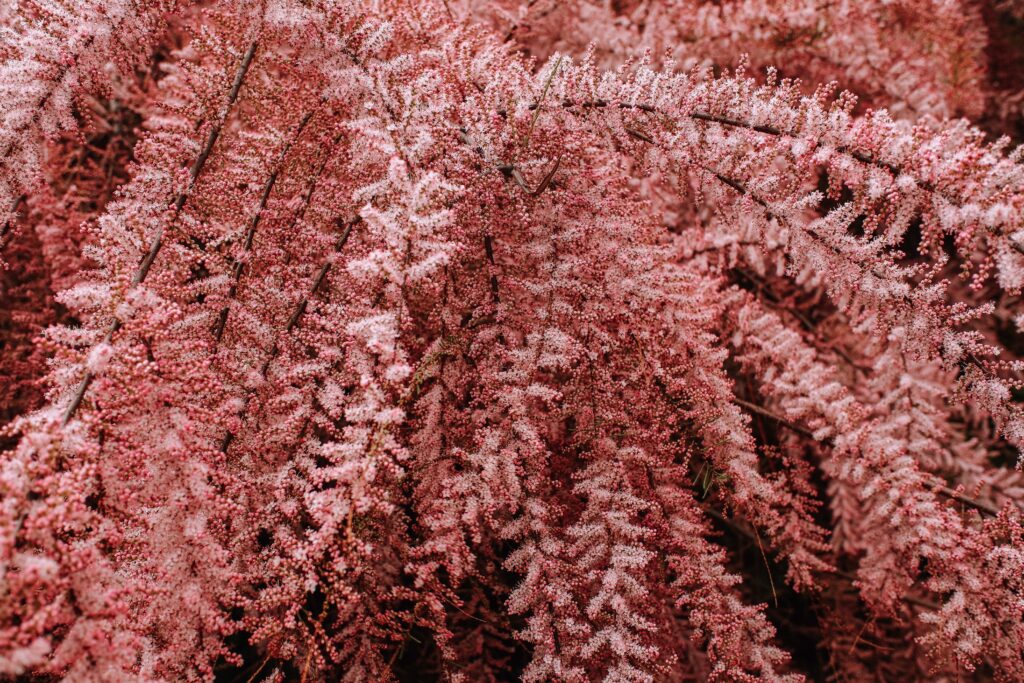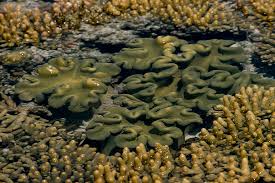Coral reefs dazzle with an enchanting array of colors, evoking images of a vibrant underwater world teeming with life. These natural wonders are not just mesmerizing but are vital to the health of marine ecosystems.
Understanding coral coloration is crucial for ecological research and conservation efforts, as it reflects the environmental conditions and health of coral reefs. This post delves into the biology behind coral colors, particularly why most corals exhibit a brownish-green hue, by examining symbiotic relationships and ecological factors.
What is Coral, and Why Is It Colorful?
What is Coral?
Corals are marine invertebrates that belong to the class Anthozoa. These organisms form large colonies composed of many individual, identical polyps. Over time, these polyps secrete calcium carbonate, forming hard, skeletal structures that result in coral reefs.
Why Is Coral Colorful?
Coral reefs are known for their vibrant colors which are largely attributed to the microscopic algae called zooxanthellae, living symbiotically within the coral tissues. These algae are crucial for coral health, contributing to the coloration and energy production within coral polyps.

Why Does Coral Look Brown?
Symbiotic Algae
The brown coloration seen in many corals is primarily due to zooxanthellae, which contain chlorophyll—a green pigment that’s crucial for photosynthesis. The density of these algae within coral tissues gives corals their brown appearance.
Health Indicator
A healthy coral tends to have high densities of zooxanthellae, which means a darker brown shade. These colors indicate that the symbiotic relationship is thriving, providing essential nutrients and energy to the coral.
Photosynthesis Connection
Through photosynthesis, zooxanthellae convert light into chemical energy, supplying oxygen and other nutrients that benefit the coral. This process not only assists coral survival but also influences their coloration, amplifying the brown hue caused by chlorophyll.
Why Are Most Corals Green?
Fluorescent Pigments
Apart from the brown coloration, many corals appear green due to the presence of green fluorescent proteins (GFPs). These pigments add green hues, enhancing the coral’s ability to reflect and absorb light efficiently.
Light Absorption
GFPs facilitate photosynthesis by absorbing available light in varying underwater conditions. This adaptation ensures that corals receive sufficient energy even in low-light environments. The blend of GFPs and zooxanthellae creates the common brownish-green appearance in many corals.
What Determines the Color of Coral?
Pigment Production
Coral polyps can produce a variety of pigments, including pocilloporins, which contribute to the diverse coloration seen in coral reefs. Each pigment reflects specific light wavelengths, creating unique hues in various coral species.
Environmental Factors
Several environmental factors influence coral coloration:
- Light Levels: Exposure to sunlight affects pigment production, where greater light facilitates the thriving of pigments, highlighting colors.
- Water Temperature: Temperature changes can impact pigment synthesis, leading to shifts in coral coloration.
- Nutrient Availability: More nutrients enhance zooxanthellae growth, affecting the brownish-green color balance.
Gene Expression
Variations in gene expression can lead to color differences even within the same coral species. These genetic changes result in diverse color morphs, allowing adaptation to different environmental conditions.
The Science Behind Coral Pigmentation
Fluorescence in Corals
Corals employ fluorescence for protection against harmful solar radiation. This adaptive trait shields corals from UV damage, while simultaneously attracting beneficial marine species and repelling predators through vibrant visual signals.
Genetic Factors
Genetic variability is a key factor leading to color polymorphism in corals. Different genetic expressions result in a spectrum of hues, providing insights into coral resilience and adaptability under changing environmental conditions.
What Is the Rarest Coral Color?
While most corals exhibit brown or green shades, rarer colors like blue offer unique insights into coral biology. The generation of blue pigments is energy-intensive and less common, offering an ecological advantage in specific habitats. These rare colors symbolize genetic diversity and resilience within coral populations.
Ecological Significance
Rare colors have ecological importance, playing roles in communication, mating, and survival strategies among coral ecosystems.
Conclusion
Coral colors are not merely aesthetic; they serve as vital indicators of reef health and ecological changes. Through understanding these beautiful hues, we gain insights into marine biology and the impacts of environmental stressors on coral reefs. We encourage readers to delve further into coral conservation, offering ways to support reef preservation efforts. For continued updates on marine biology and conservation news, consider subscribing to our newsletter. Your awareness and action can contribute significantly to safeguarding these vibrant marine ecosystems for future generations.
FAQs
Why does coral look brown?
The presence of symbiotic algae, or zooxanthellae, containing chlorophyll gives many corals their brown color.
Why are most corals green?
Green hues arise from green fluorescent proteins that help in efficient light absorption.
What determines the color of coral?
Coral color is influenced by pigment production, environmental factors, and gene expression.
What is the rarest coral color?
Blue is among the rarest coral colors, largely due to the energy demands of producing blue pigments.


